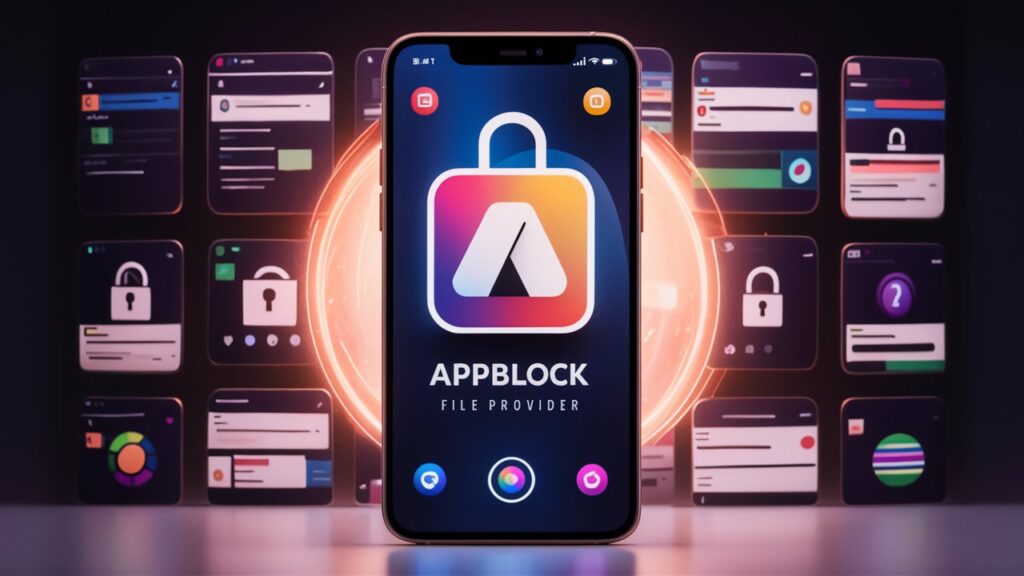Introduction
If you are an Android user who relies on AppBlock to boost productivity by blocking distracting apps and websites, you may have come across a strange-looking file path like content://cz.mobilesoft.appblock.fileprovider/cache/blank.html. At first glance, this long string of text may seem like an error or even a bug. In reality, it is part of how AppBlock works behind the scenes to ensure smooth and efficient website blocking. This article will break down exactly what this URI means, why it appears, and how it is connected to AppBlock’s core functionality. By the end, you will clearly understand how AppBlock manages cached files and why seeing this address is perfectly normal in most cases.
What Is content://cz.mobilesoft.appblock.fileprovider/cache/blank.html?
In simple terms, content://cz.mobilesoft.appblock.fileprovider/cache/blank.html is a content URI generated by the AppBlock app on Android devices. Android apps often use something called a FileProvider, which allows them to securely share files within the system or with other apps. In this case, AppBlock uses its FileProvider to create temporary HTML files inside its cache folder, such as “blank.html.” This blank HTML page can then be displayed when you try to access a blocked website. Instead of letting the site load, AppBlock redirects you to this cached blank file, showing nothing or a minimal placeholder. This ensures that distractions are cut off instantly without slowing down your device.
Why Does AppBlock Use a Blank HTML File?
The reason AppBlock relies on a cached blank.html file is tied to efficiency and reliability. Blocking websites on a browser can be tricky because each browser has its own rules and rendering engine. By serving a cached blank page whenever a blocked domain is requested, AppBlock avoids compatibility issues and ensures the block happens seamlessly. This approach is lightweight, meaning it does not consume much storage space, since the blank.html file is tiny and stored temporarily in the cache. It also avoids sending repeated requests over the internet, which helps with speed and battery life.
Is content://cz.mobilesoft.appblock.fileprovider/cache/blank.html an Error?
No—despite looking unusual, this URI is not an error. Android apps commonly generate file paths that start with “content://” to indicate that the file is managed by the Android ContentProvider system. Seeing this path means AppBlock is functioning correctly and creating a local cache for blocking purposes. However, if you notice repeated crashes, endless redirects, or problems opening normal websites, then the issue might be due to corrupted cache files, outdated versions of AppBlock, or a conflict with another app. In those rare cases, clearing cache or reinstalling AppBlock usually resolves the issue.
How to Fix Issues with content://cz.mobilesoft.appblock.fileprovider/cache/blank.html
If you do encounter problems linked to this file path, there are a few practical fixes:
-
Clear Cache and Data – Go to Settings > Apps > AppBlock > Storage and clear cache. This forces the app to recreate its temporary files.
-
Update AppBlock – Older versions may have bugs. Always keep AppBlock updated from the Google Play Store.
-
Check Permissions – AppBlock needs certain permissions (like Accessibility Service) to function properly. Ensure they are enabled.
-
Reinstall the App – If problems persist, uninstall and reinstall AppBlock to reset its configuration.
-
Contact Support – For advanced issues, reaching out to MobileSoft’s official support can help, especially if the bug relates to the file provider system.
Conclusion
The mysterious-looking string content://cz.mobilesoft.appblock.fileprovider/cache/blank.html is simply AppBlock’s way of handling blocked websites through cached blank files. Rather than being a glitch, it is an intentional part of how the app ensures reliable blocking without interfering with your device’s performance. While it may appear technical, understanding this path can help users feel confident that AppBlock is working as designed. Only in rare cases of app malfunction should you take troubleshooting steps like clearing cache or reinstalling. Overall, AppBlock remains a powerful productivity tool, and its clever use of cached blank pages shows how modern Android apps balance efficiency with functionality.
FAQ (Frequently Asked Questions)
Q1: What is content://cz.mobilesoft.appblock.fileprovider/cache/blank.html?
It is a cached blank HTML file created by the AppBlock app, used to replace blocked websites with an empty page for distraction-free browsing.
Q2: Is this URI safe?
Yes, it is completely safe. It is generated internally by AppBlock and does not indicate malware or hacking attempts.
Q3: Why do I see a blank.html file instead of a website?
You see this because AppBlock is actively blocking the website you tried to open. The blank.html file is served as a placeholder.
Q4: How can I fix problems related to this file path?
Clearing AppBlock’s cache, updating the app, checking permissions, or reinstalling usually fixes any issues related to corrupted cache files.
Q5: Is AppBlock legal and secure to use?
Yes, AppBlock is a legitimate Android app available on the Google Play Store, designed to improve productivity by restricting access to apps and sites.

